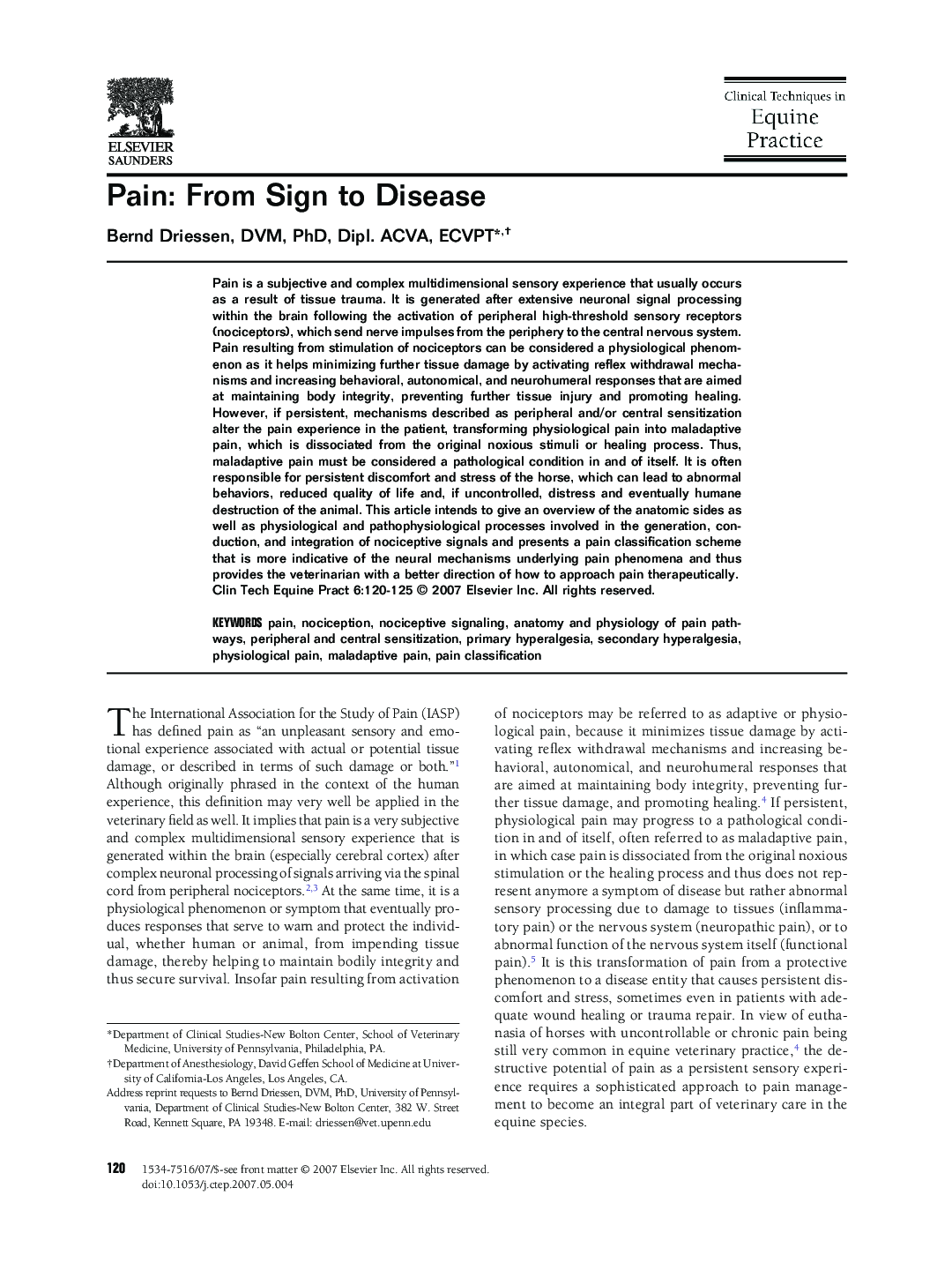| Article ID | Journal | Published Year | Pages | File Type |
|---|---|---|---|---|
| 2393207 | Clinical Techniques in Equine Practice | 2007 | 6 Pages |
Pain is a subjective and complex multidimensional sensory experience that usually occurs as a result of tissue trauma. It is generated after extensive neuronal signal processing within the brain following the activation of peripheral high-threshold sensory receptors (nociceptors), which send nerve impulses from the periphery to the central nervous system. Pain resulting from stimulation of nociceptors can be considered a physiological phenomenon as it helps minimizing further tissue damage by activating reflex withdrawal mechanisms and increasing behavioral, autonomical, and neurohumeral responses that are aimed at maintaining body integrity, preventing further tissue injury and promoting healing. However, if persistent, mechanisms described as peripheral and/or central sensitization alter the pain experience in the patient, transforming physiological pain into maladaptive pain, which is dissociated from the original noxious stimuli or healing process. Thus, maladaptive pain must be considered a pathological condition in and of itself. It is often responsible for persistent discomfort and stress of the horse, which can lead to abnormal behaviors, reduced quality of life and, if uncontrolled, distress and eventually humane destruction of the animal. This article intends to give an overview of the anatomic sides as well as physiological and pathophysiological processes involved in the generation, conduction, and integration of nociceptive signals and presents a pain classification scheme that is more indicative of the neural mechanisms underlying pain phenomena and thus provides the veterinarian with a better direction of how to approach pain therapeutically.
